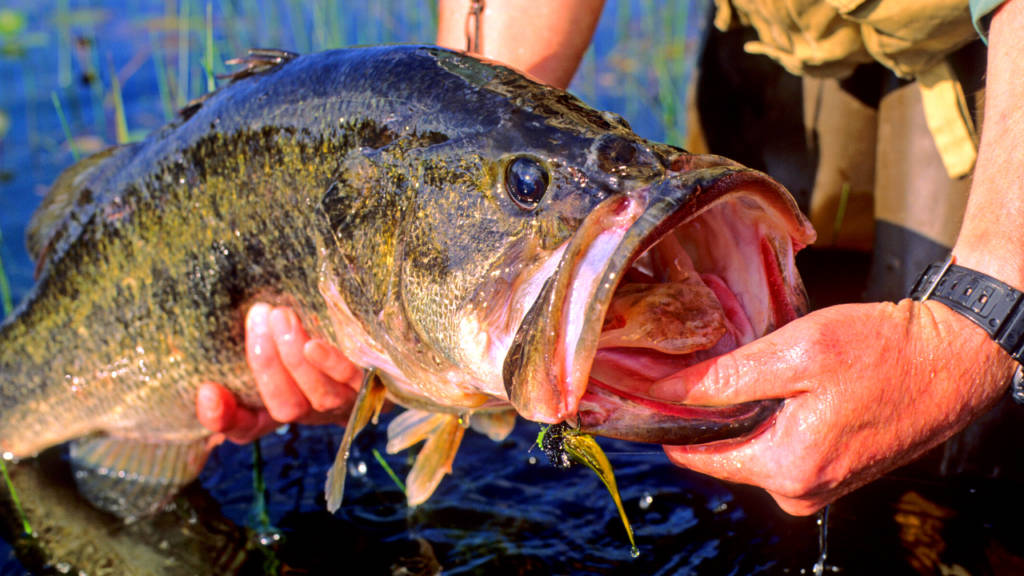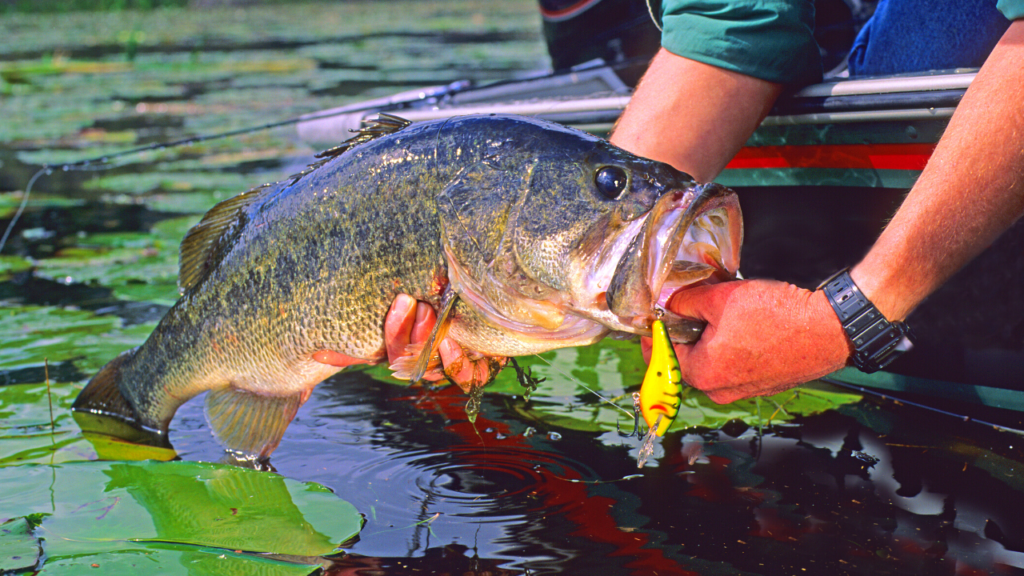An Egyptian angling scene from as far back as 2000 BC has shown figures with fishing rods, lines, and nets. This has proven that similar to hunting, fishing was a means of survival in the past. In present times, however, it is considered more of a sport.
Fishing is also referred to as angling, and it involves using rods, baits, and hooks to catch fish or other aquatic animals. In this article, we will be discussing everything you need to know about catching largemouth bass in spring.
How to Catch Largemouth Bass in Spring
Largemouth bass fishing appears quite challenging because these species are constantly in motion. Every day, week, and season, the fish is moving, following the temperature of the water, their spawning cravings, and the need to protect themselves from predators.
To catch largemouth bass in spring, you need to understand all the factors that affect bass migration during the year, where to find them, and how to bait them.

A bass typically changes direction from winter’s deeper waters to the shallow spring waters in spring. However, the water temperature often fluctuates because early spring weather is inconsistent, and bass alternate between both water options.
Another factor that affects largemouth bass movement is spawning behavior, which is in three stages: pre-spawn, spawn, and post-spawn stage. Largemouth bass demonstrates various behaviors in different stages through the stages of spawning.
Bass Behavior in Spring
Due to winter hunger, largemouths are always on the lookout for food to regain weight in spring. Until the water temperature gets warm, bass tends to locate staging areas around shoreline points, channels in spawning coves, or any deep water covering.
Considering that most of these structures are not obvious, you require electronics to locate them. In early spring, you can drag lipless crankbaits and jigs slowly across the bottom for better results.
When largemouths move towards spawning coves, it is common for them to stop and feed in isolated spots such as fallen trees and rocks. Even old patches of weed from the previous year are a perfect feeding spot.
A medium-diving crankbait is best to explore the water leading to flats and coves. Also, bright-colored patterns are more advisable in stained water, and in clear water, natural patterns are best.
The crankbait should be deep enough to hit bottom. A jig-tipped plastic case is another ideal option for slowly exploring the environment.
When looking for warm water, bass will start to move towards shallow waters immediately when the areas get warm under the spring sun. Shallow lakes with stains are more likely to warm faster, and largemouths in these waters will move earlier than those in clear and deeper lakes.
The perfect spot to look out for bass is the northern region of a large lake, specifically shorelines facing the south. This is considered ideal because the area has had adequate exposure to the sun and is protected from the cold winds of the north.
Shallow and protected coves are also water retainers, and in spring, the water warms up quickly, so the bass can easily be found there. However, it is essential to avoid areas exposed to wind and shaded areas.
Understand the Fishing Conditions
To catch largemouth bass in spring, it is essential to understand their behavior in the season. To better understand the spring fishing condition, split the season into 4 sections to realize their spawning behavior: Pre-spawn, spawn, post-spawn, and late spring.

Your depth of coverage is around 8-15 feet in the pre-spawn stage. The spawn stage moves you closer to the top at a shallower depth. Post-spawn takes you back to the same depth as the pre-spawn stage, and late spring is the perfect time to catch bass around the shore.
Understand your Terrain
Largemouth bass change location depending on the weather, their spawning cycle, and the time of day. You can find them hidden among the debris, in shallow flats, amidst rocky bottoms, bushes and grass, and underneath docks.
Choose your fishing spot carefully
The time of day also affects the movement of bass, and early in the day, they like to feed around the shore. They prefer to delve further into the open water for the latter part of the day.
Choose the Right Fishing Gear
A suitable rod should be lightweight and about 6.5-7 feet with a medium-soft tip and medium action. For your line, it is essential to match it with the diving depth. Depending on how you want the bait to run, pair the precise line size with your crankbait.
Also, to imitate actual lizards or worms, you can use rubber and plastic lures. These lures are effective because they are lifelike and can be used weighted or weightless.
Step-by-Step Guide to Catch a Largemouth Bass in Spring
To make the most of your bass fishing experience, it is crucial to employ the correct technique. We have outlined some steps to help you through your spring fishing experience:

– Cast your bait near an underwater plant or debris. Bass typically hide around or understructure to ambush for a feeding opportunity. Try pitching your lure towards structures to elicit a response strike from a bass close by as you practice your casting more.
When Bass Attack Baits?
– When casting your line and bait, ensure it is parallel to the shore and pull the bait towards you. Doing this will allow your bait to stay longer in the strike zone, extending your bait’s exposure to the bass.
– Imitate fleeing with quick movements to prompt a feeding response from the bass. On the water’s surface, create a zig-zag pattern or back and forth motion with your lure.
– Cast out your lure and allow your line enough time to reach the bottom. When your bait hits bottom, twitch it and slowly lift the rod’s tip to point straight upwards. Leave it in that position, then drop it again and reel the slack in.
To know when the bass attacks your bait, you can hold your finger against the line while lifting the tip of your rod. Look out for a bump or sudden resistance on the line. Set the hook by dropping the rod’s tip quickly and then pull back hard.
Conclusion
Catching largemouth bass in spring is no easy feat, and it requires adequate knowledge of the terrain and their spawning behavior. In this article, we have provided answers to all your questions about fishing for largemouths in spring.
We hope you enjoyed reading. Please leave a comment if you did, and don’t forget to share!


